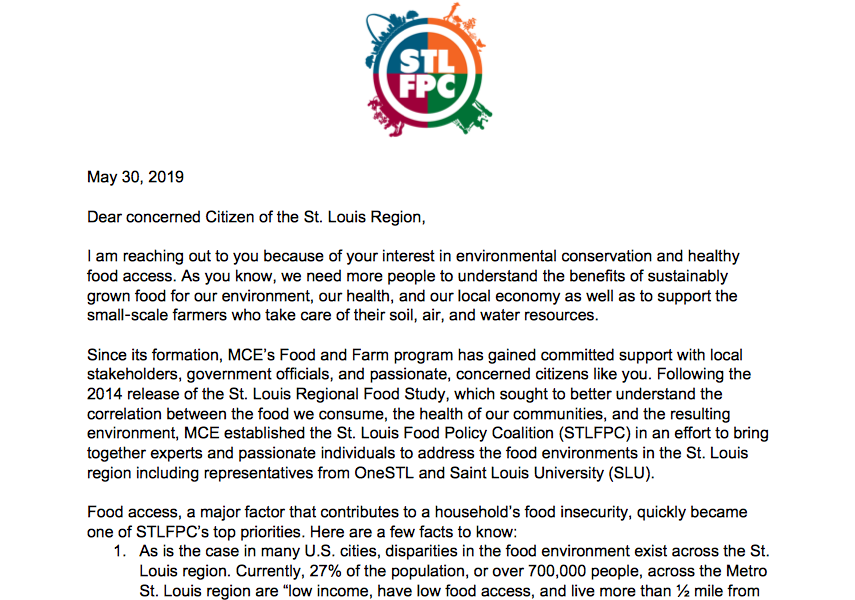Can you take 60 seconds to call Senator Blunt on important legislation regarding Missouri River flooding? Senator Blunt has co-sponsored the Missouri River Flood Control Prioritization Act, a piece of legislation that would require the U.S. Army Corps of Engineers to remove fish and wildlife from the authorized purposes of the Missouri River Mainstem Reservoir…
Read More2019 Flooding Update: What Can We Do?
Devastating and historic spring floods continue to impact river communities along both the Missouri and Mississippi Rivers. How can we respond and what can be done to prepare for increasingly frequent high water events? MCE and partners organizations like the Mississippi River Network are advocating for the use of more “natural infrastructure” in flood control…
Read More50th Gala Sponsorship Packet
[dflip id=”8154″][/dflip]
Read MoreNew Study Says What’s Needed to Help Local Farmers, Improve Food Access, and Protect the Environment
FOR IMMEDIATE RELEASE For release: June 3, 2019 Contact: Melissa Vatterott, Food & Farm Director (314) 727-0600, ext. 111 mvatterott@moenviron.org NEW STUDY SAYS WHAT’S NEEDED TO HELP LOCAL FARMERS, IMPROVE FOOD ACCESS, AND PROTECT THE ENVIRONMENT St. Louis, MO: Missouri Coalition for the Environment (MCE), on behalf of the St. Louis Food Policy Coalition (STLFPC),…
Read MoreFood Retail Audit Funding Letter
[dflip id=”8098″][/dflip]
Read MoreBlog: The Flow of Water – River Dispatches
By Jessie Dryden, Rivers Organizer The call to wake and rise affects us all differently. On hearing the reveille—a signal to get up—some move slow to the sound, others fast. And it’s not always a bugle horn shocking our ears into awareness and our awareness into action—at times, that call is willed from a guttural…
Read More




